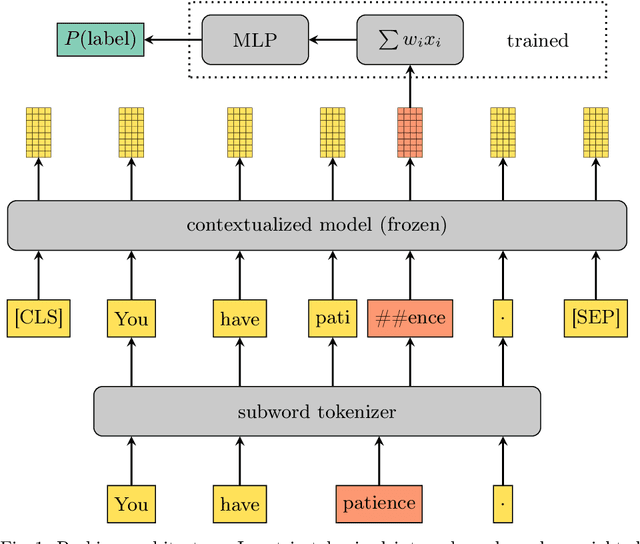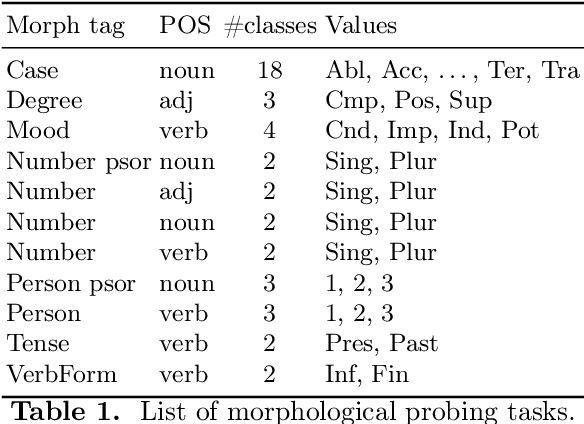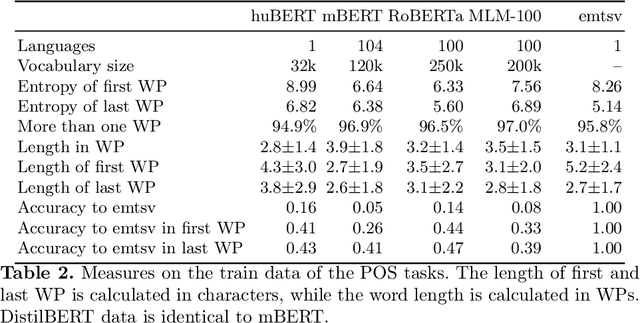Dávid Márk Nemeskey
Evaluating Contextualized Language Models for Hungarian
Feb 22, 2021



Abstract:We present an extended comparison of contextualized language models for Hungarian. We compare huBERT, a Hungarian model against 4 multilingual models including the multilingual BERT model. We evaluate these models through three tasks, morphological probing, POS tagging and NER. We find that huBERT works better than the other models, often by a large margin, particularly near the global optimum (typically at the middle layers). We also find that huBERT tends to generate fewer subwords for one word and that using the last subword for token-level tasks is generally a better choice than using the first one.
emLam -- a Hungarian Language Modeling baseline
Jan 26, 2017



Abstract:This paper aims to make up for the lack of documented baselines for Hungarian language modeling. Various approaches are evaluated on three publicly available Hungarian corpora. Perplexity values comparable to models of similar-sized English corpora are reported. A new, freely downloadable Hungar- ian benchmark corpus is introduced.
* Additional resources: - the emLam repository: https://github.com/DavidNemeskey/emLam - the emLam corpus: http://hlt.bme.hu/en/resources/emLam
 Add to Chrome
Add to Chrome Add to Firefox
Add to Firefox Add to Edge
Add to Edge